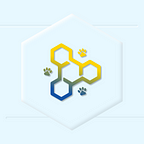User Incentivization: ʟUSD Rewards
Within the DEVITA ecosystem, there are two ways for users to obtain ʟUSD. The first route is through rewards: DEVITA incentivizes its users to actively participate in the ecosystem by offering numerous ways to receive rewards. The second option is DEVITA’s ʟUSD minting process. In today’s article, we will scratch the surface of DEVITA’s ʟUSD Rewards.
DEVITA Ecosystem Rewards
As you may have read in our Whitepaper, 1,000 new LIFE tokens are minted per every new user. 20% of this 1,000 new LIFE tokens (200 LIFE) gets collateralized, and the converted stablecoin, ʟUSD goes to the new user as a reward for joining DEVITA. This is the first reward that every new user will receive. After that, through various interactions within the DEVITA ecosystem, users can earn additional ʟUSD rewards. These interactions include, but are not limited to: referrals, governance participation, user feedback, data inputs, and completing each level of user verification.
(Details regarding user verification levels can be found in Introduction to DEVITA’s Token).
In order to cultivate consistent user activity, DEVITA came up with a tier based reward system. This proprietary 3-axis tier system with 7 tiers per axis will automatically dictate the amount of rewards each user receives, even for the same exact actions. This way the users are motivated to use the platform more frequently, and those who are active, get compensated more than those who are not.
The 3 Axes
The 3 axes can be broken down into the following:
- Usage Frequency and Consistency
- Data Integrity
- Data Quantity
These 3 axes will automatically compute the user’s integral grade/level, based on how frequently and consistently the user uses the DEVITA application and participates through various actions. Elements such as data value grade, data difficulty, quality, and validation of their previous data will also be taken into account for the computation. Simply put, even if it is the same set of data, data from users who are more active on the platform will be regarded as higher in quality and integrity than data from users who are not.
For example:
John, Jane, and Smith have all been using DEVITA for a month.
- John inputs his daily water consumption and calorie intake 3 times a day, everyday.
- Jane inputs her daily water consumption and calorie intake once a day, everyday.
- Smith inputs his daily water consumption and calorie intake once a day, but 3 days a week.
John, Jane, and Smith all input their height and weight today for the first time. Essentially, they have all inputted the same type of data today: their own height and weight. However, the amount of reward they each receive for this same input will vary because of their contrasting levels of consistency in their previous activities. John will receive the highest amount and Jane will receive more than Smith.
7 Tier Scale
After the 3 axes computation, the amount of reward to be distributed will also go through a separate 7-tier scale. The 7-tier scale is based on the user difficulty or barrier to entry for the user to input. Let’s consider an example where under the same circumstances (i.e. both users have the same level of frequency and consistency in their in-app activities), two users have inputted the same data.
Case 1:
Both Sam and Sarah input their blood type into DEVITA. For the both of them, this is the first data they have input into the application.
- Sam inputs his blood type and uploads a pdf file of his blood test, a supporting document of his blood type issued by a medical institution.
- Sarah inputs her blood type but does not upload any supporting document.
Both of the users have provided the same type of data input, but Sam uploaded a supporting document issued by a medical institution, whereas Sarah only provided her own input. Even though it’s the same exact data input, Sam’s input will generate more reward than that of Sarah’s because of the supporting document.
Case 2:
Both Sam and Sarah have injured their wrist the exact same way and have decided to upload this information onto DEVITA.
- Sam uploads his X-ray results along with his injury report.
- Sarah uploads her MRI results along with her injury report.
Although both users have injured their wrist the same way and essentially have inputted the same data, Sarah will receive more reward based on the fact that MRI has higher cost and difficulty in obtaining than an X-ray.
We hope that these examples have given you a general understanding of our proprietary 3-axis tier system with 7 tiers per axis dictating the amount of rewards each user receives. These were simplified examples to better aid user understanding of the automatic reward computation. To prevent any confusion: these rewards are distributed to users just for being active members within the ecosystem for inputting their data into the application through their own devices. These data inputs will still be encrypted and only be accessible to view for the owners themselves. Later on, users may choose to monetize their anonymous decrypted data sets through DEVITA’s auction based marketplace function. Aside from data inputs, users may also earn rewards through referrals, governance participation, and user feedback. How these actions generate rewards will be discussed in each of the articles that will be covering those topics. Stay tuned for our next article explaining the Collateralization and Minting Mechanism!
